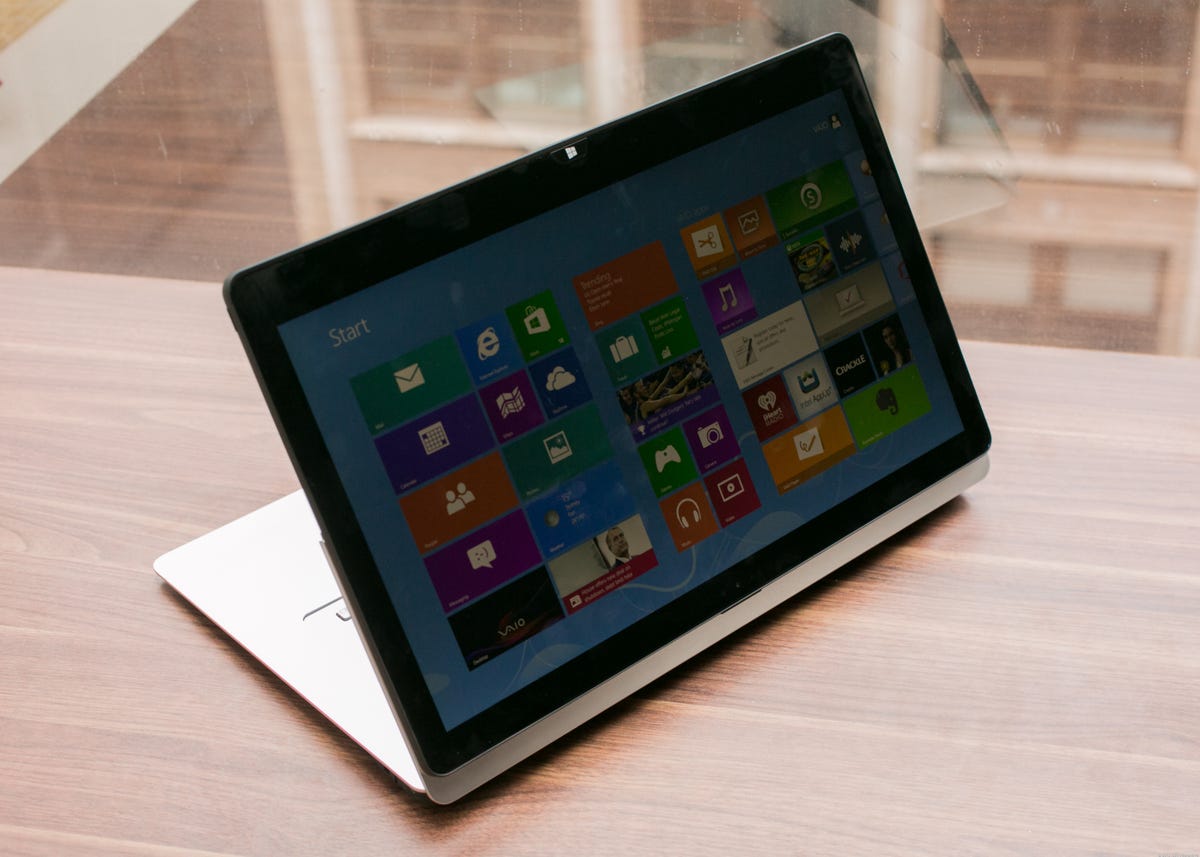
Best tablets, hybrids, laptops, and all-in-ones for Windows 8.1
If you've been postponing buying a new Windows 8 computer until Microsoft smoothed out some of the OS' wrinkles, that time is now.
No, Microsoft hasn't scrapped the new OS and brought back Windows 7. But with the release of Windows 8.1, it has done some fine-tuning to make users a little more comfortable in the updated surroundings.
As was the case last year when Windows 8 launched, PC vendors are releasing new hardware to complement the updated OS. To that end, we've rounded up some of the more promising options headed our way.
And, since this is a free OS update, we've included a handful of currently available Windows 8 systems that are worth checking out.
Microsoft Surface Pro 2
Dell Venue 11 Pro
Much like the Surface Pro 2, Dell's Venue 11 Pro is a tablet that can be used in three ways: as a typical Windows 8.1 tablet, as a laptop when attached to a keyboard dock, or remotely connected to a dock that's hooked up to a monitor or TV to play movies and TV shows on a larger screen.
Sony Vaio Tap 11
The thinnest Windows 8 tablet you can get with a full Intel Core i-series CPU, the Vaio Tap 11 is something between a slate and a full hybrid like the Lenovo Yoga series. When traveling, the included keyboard magnetically attaches over the screen. But, when it's time to work, you separate the two and the tablet half sits up on a built-in kickstand. If you mainly want a tablet experience with some laptop-like abilities, this is one to check out.
Asus Transformer Book T100
This Windows 8.1 tablet/laptop hybrid runs on a quad-core Intel Atom processor using "designed for tablets" Bay Trail architecture. The tablet consists of a 1,366x768-pixel-resolution 10.1-inch IPS panel with Micro-HDMI, Micro-USB, a microSD card reader, and a headphone jack on the sides. Under the hood along with the aforementioned processor are 2GB of RAM and either 32GB ($349) or 64GB ($399) of storage.
Included in that price is its keyboard dock with a touch pad and a full-size USB 3.0 port. Just pop the tablet onto the dock and use it as a laptop. While overall not terribly exciting, its relatively low price makes it an attractive option for testing the Windows 8.1 waters.
HP Spectre 13
Not sure if you want a hybrid or a regular laptop? Well, HP decided to offer both solutions for the HP Spectre 13. Both versions have an aluminum case, a 1,920x1,080-pixel-resolution IPS screen, Beats Audio speakers, and dual USB 2.0 ports and a full-size HDMI port.
The Spectre 13 X2 (starting at $1,099.99) is a hybrid, though, so its keyboard and display can be separated and used as a tablet. The Spectre Ultrabook, which starts at $999.99, is a regular touch-screen clamshell design.
If those are too pricey for you, HP will also have new hybrids in its Pavilion lineup.
Lenovo IdeaPad Yoga 2 Pro
You want pixels? This hybrid's screen is loaded with them. The 13.3-inch display has a native resolution of 3,200x1,800 pixels, putting it in similar territory as the Toshiba Kirabook, Retina MacBook Pro, Chromebook Pixel, Samsung Ativ Book 9 Plus, among others. Like past models, the Yoga 2 starts off looking like a regular clamshell laptop, but the screen folds back a full 360 degrees to form either a thick tablet, or a stand/kiosk device when only folded halfway back.
If you want something smaller, the 11-inch Lenovo IdeaPad Yoga 11S will be updated with Windows 8.1, too.
Lenovo ThinkPad Yoga
Dell XPS 15
Boasting an incredibly sharp 3,200x1,800-pixel resolution stretched across a 15.6-inch screen, Dell outdid itself with the XPS's display. It's even coated with Gorilla Glass to stand up to all the poking around you're going to be doing.
At 0.7 inch, the XPS 15 is impressively thin, but still has three USB 3.0 ports, SD card slot, HDMI, Mini DisplayPort, and a single USB 2.0 port. It, of course, has the latest Intel Haswell processors that no doubt contribute to Dell's battery life claim of up to 13 hours. You also get a choice of integrated Intel graphics or a discrete Nvidia Geforce 750M and either a 500GB or 1TB hard drive with a 32GB solid-state drive, or you can go with just a 512GB SSD.
Samsung Ativ Book 9 Plus
With a stunning 3,200x1,800-pixel 13.3-inch touch-screen display, a fourth-gen 1.6GHz Intel Core i5 4200U processor, and more than 8 hours of battery life, the Ativ Book 9 Plus is an exemplary ultrabook for Window 8.1.
Sony Vaio Pro 13
Despite its Wi-Fi woes (Sony has updated drivers to improve dropped signal issues), the Pro 13 remains one of our favorite ultrabooks thanks to its small, lightweight design and long battery life.
Lenovo IdeaPad Flex 20
At only 8 pounds, the Flex 20 is one of the lightest all-in-one desktop/tabletop PCs that we've laid hands on. The main drawback is that the otherwise excellent IPS screen has only a 1,600x900-pixel native resolution.
Dell XPS 27
Looking for more Windows 8.1 coverage?
Read: Windows 8.1: Should you upgrade?
Read: How to prepare your PC for Windows 8.1
Read: The new features you need to know about in Windows 8.1


